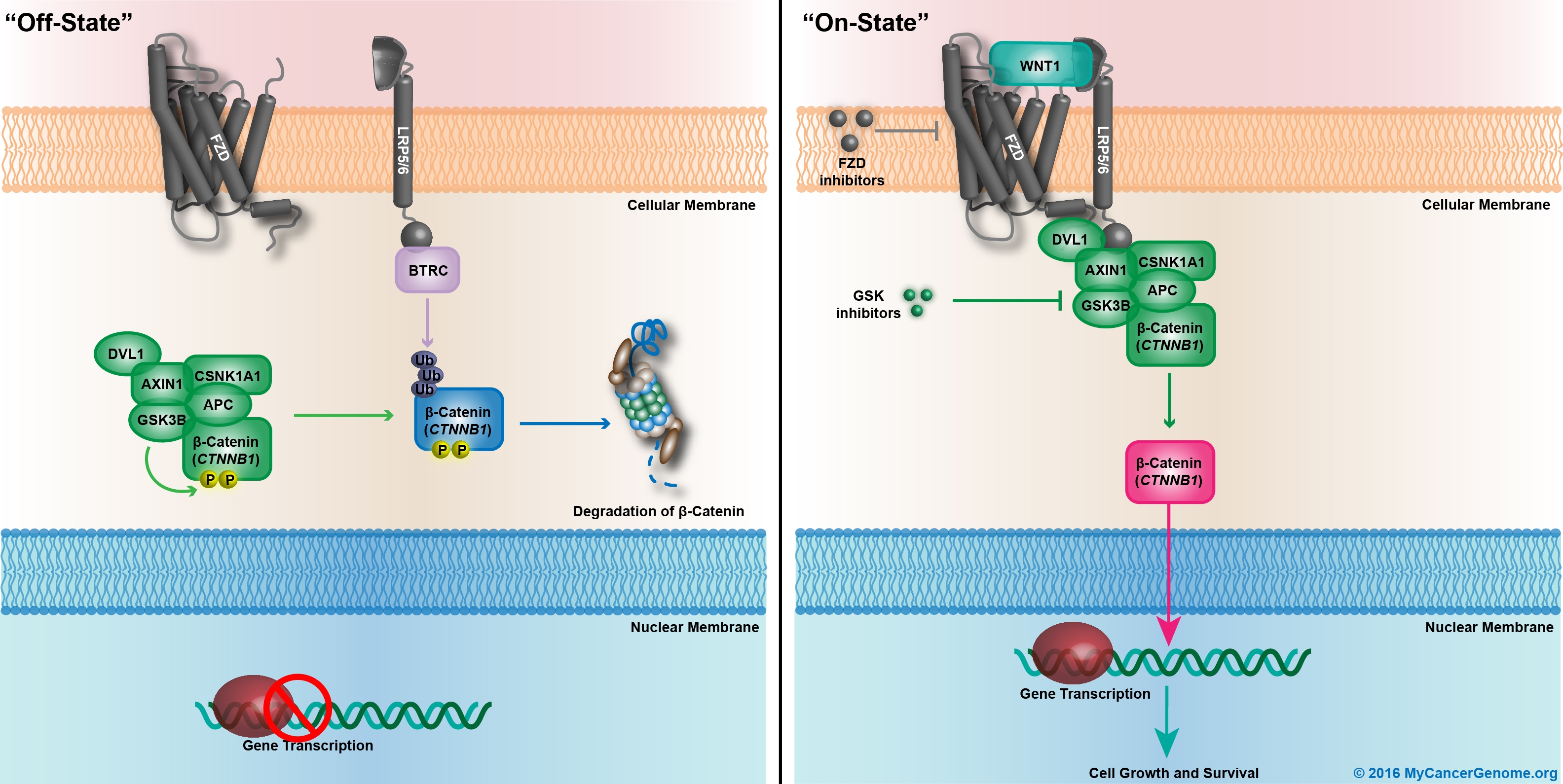Pathways /
Beta-Catenin/WNT signaling
Overview
The β-catenin/WNT cell signaling pathway promotes the activation of gene transcription to mediate pleiotropic effects including cell growth and survival. The β-catenin/WNT signaling pathway is activated by the binding of the WNT1 ligand to a G-protein coupled receptor, frizzled (FZD1). The pathway is inhibited by the absence of the WNT1 ligand. [1]

Figure 1. In the presence of a WNT1 signal, disheveled (DVL1) induces the dissociation of the destruction complex. This causes the release of β-catenin, causing an increase in the levels of cellular β-catenin. Increased levels of β-catenin in the cell activate gene transcription and promote cell growth and survival. In the absence of a WNT1 signal, BTRC binds β-catenin, ubiquitinating β-catenin and marking it for degradation at the proteasome. Low levels of β-catenin in the cell cause the inhibition of gene transcription, cell growth, and survival. In cancer, the protein responsible for tagging β-catenin for ubiquitination is mutated. This allows for a constitutive increase in the levels of cellular β-catenin, causing uncontrolled cell growth and proliferation. Specific nodes in the pathway that are therapeutically actionable are noted.

 Back to Pathways List
Back to Pathways List
